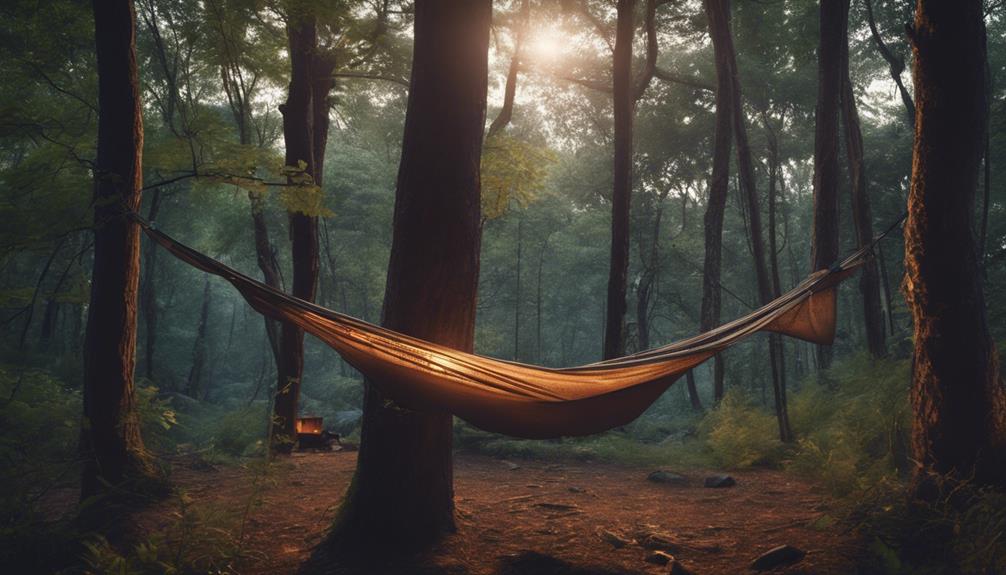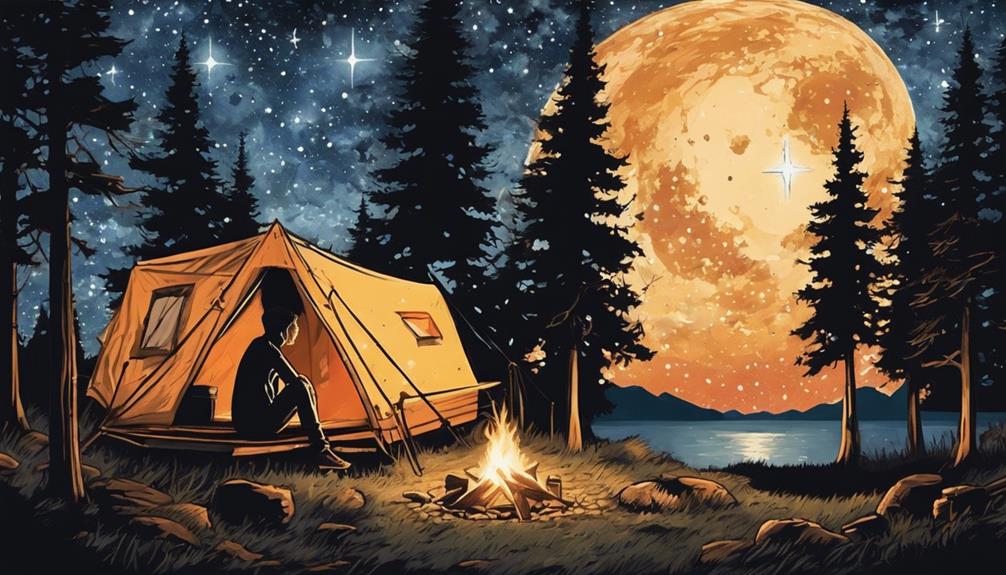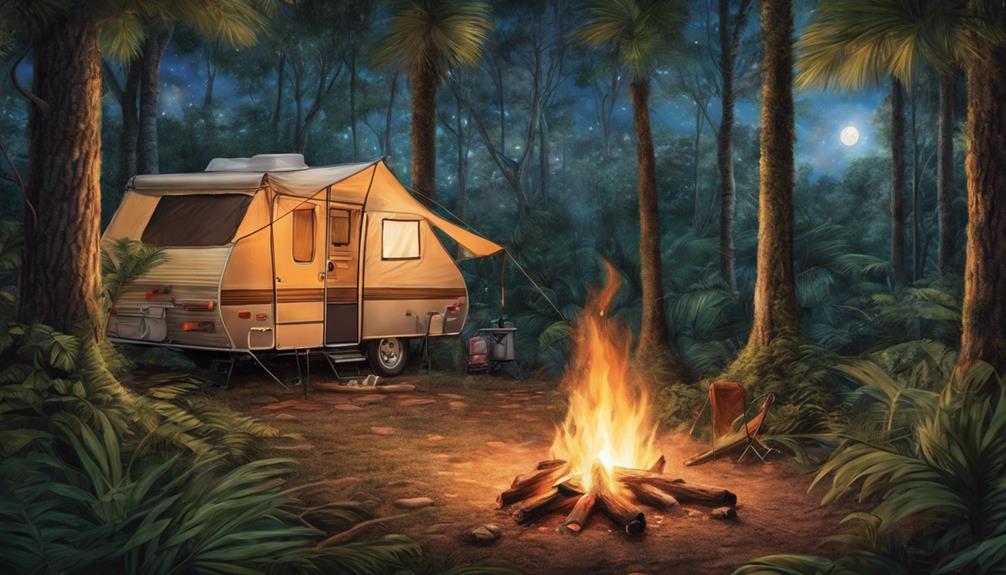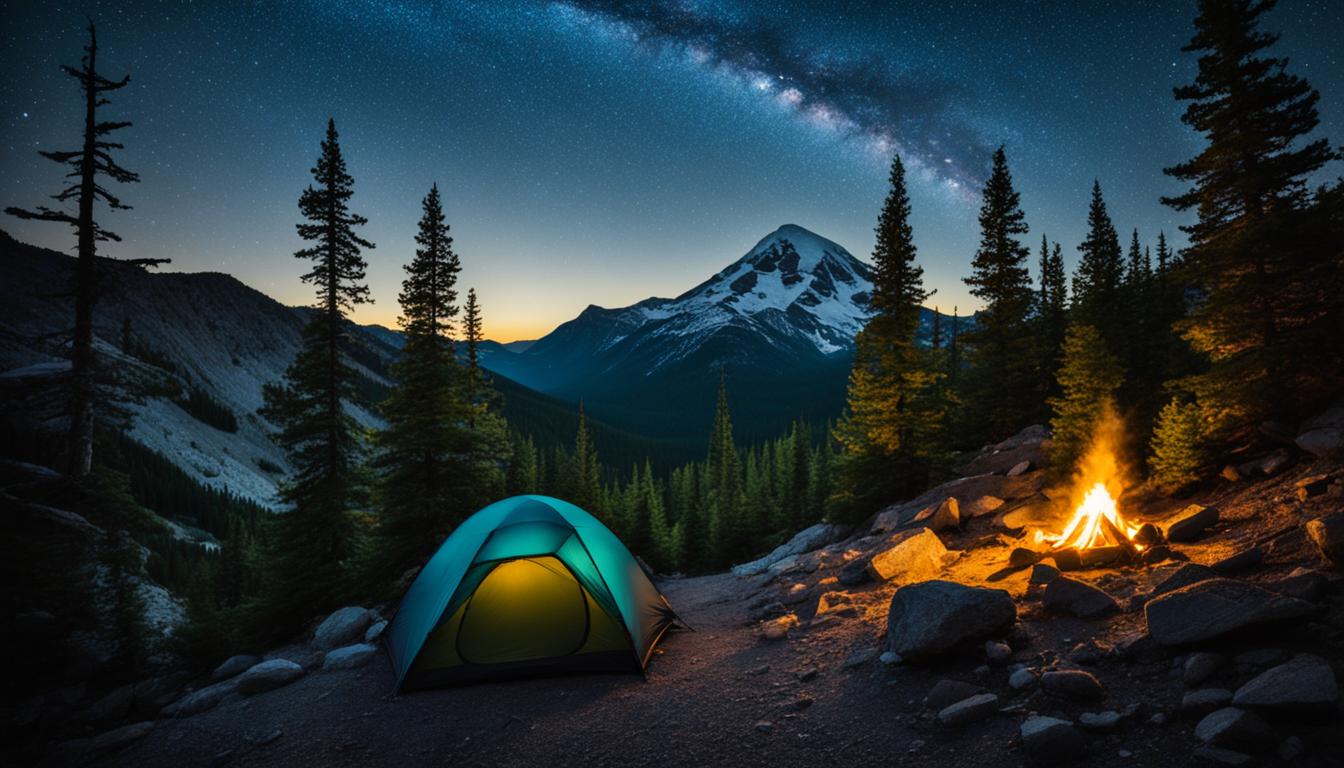When setting up your hammock for stealth camping, it is important to select an isolated location with thick tree coverage for privacy and hiding. Use tree-friendly straps to safeguard the environment and guarantee a safe setup. Keep a correct 30-degree hang angle and adjust for comfort. Add insulation and additional comfort items for a restful sleep.
Conceal your campsite effectively among trees and foliage, away from busy paths. Master these skills, and your stealth camping experience will be top-notch.
Key Takeaways
- Seek secluded areas with dense tree cover for stealth
- Use tree-friendly straps to protect trees and maintain concealment
- Opt for a 30-degree hang angle for comfort and security
- Insulate for warmth with underquilt; use bug net for comfort
- Conceal campsite with low-profile gear; avoid high-traffic areas
Choosing the Right Location
When scouting for the perfect location for stealth camping with your hammock, prioritize seclusion and strategic concealment to ensure a peaceful and undisturbed night under the stars.
Look for hidden spots away from popular trails and public areas, opting for areas with dense tree cover and natural barriers that can conceal your hammock setup effectively. Choosing locations with minimal human activity and noise will reduce the risk of detection, providing a serene camping experience.
Consider venturing off-trail to find secure locations that offer both safety and solitude. It's essential to seek out areas with dense tree cover, not only for concealment but also for protection from the elements. By selecting a secure location that provides adequate cover, you can enjoy a night of comfortable and worry-free camping in nature's embrace.
Selecting Tree-Friendly Straps
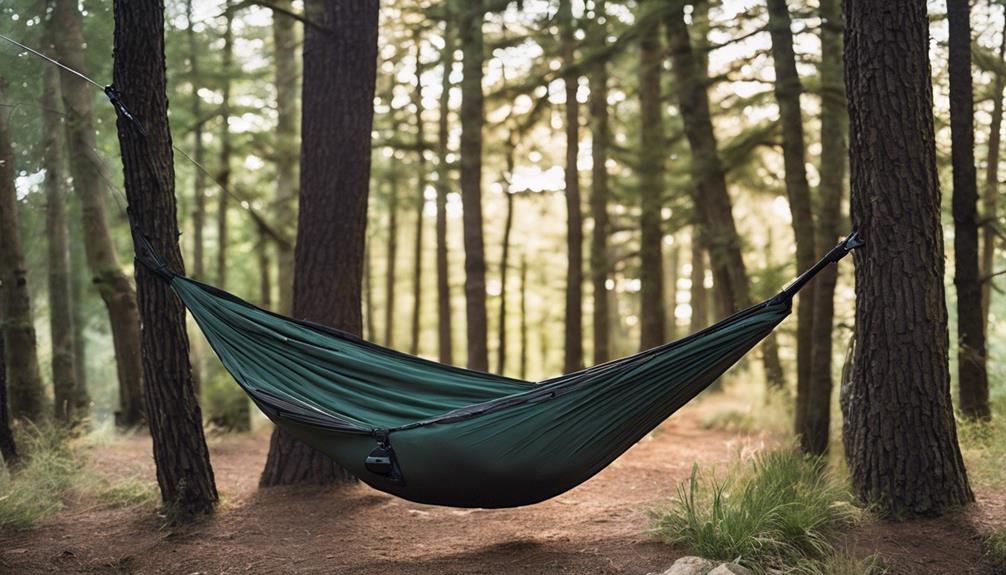
As we move forward in setting up our stealth camping hammock, the selection of tree-friendly straps plays a vital role in ensuring the protection and stability of our hammock suspension system while safeguarding the trees from harm. Quality tree straps are crucial for maintaining the health of the trees and providing a secure and reliable hang for our hammock.
Here are key factors to consider when choosing tree-friendly straps:
- Even Weight Distribution: Tree-friendly straps help distribute the weight of the hammock evenly, preventing undue strain on tree bark.
- Tree Protection: Durable materials like polyester webbing or nylon are essential to protect tree bark from damage.
- Adjustable and Wide Straps: Opt for adjustable, wide straps of at least 1 inch in width for optimal stability and tree protection.
Proper Hammock Hanging Technique
To achieve an ideal hang for your hammock, ensure the proper hammock hanging technique is executed with precision and care. Maintaining a 30-degree angle is crucial for optimal comfort and support while hanging your hammock. Start by securing tree straps around 6 feet high to ensure a stable setup. Adjust the hammock sag accordingly based on its length and the distance between trees. It is essential to use quality tree-friendly straps to protect the trees and distribute weight evenly, preventing damage to the bark. When choosing a camping hammock, opt for one designed for durability to ensure a safe and comfortable experience. A robust suspension system is key to a successful hammock setup, providing security and peace of mind. Remember, a well-hung hammock not only enhances your camping experience but also respects nature by safeguarding tree trunks. Check out the table below for a quick reference guide on proper hammock hanging techniques.
| Aspect | Recommendation | Importance |
|---|---|---|
| Hang Angle | Maintain a 30-degree angle for optimal comfort and support | Ensures comfort and proper support |
| Tree Strap Height | Secure tree straps around 6 feet high for stability | Ensures a stable and safe setup |
| Hammock Sag Adjustment | Adjust hammock sag based on length and tree distance | Enhances comfort and usability |
| Quality Straps | Use tree-friendly, weight-distributing straps | Protects trees and ensures durability |
Ensuring Comfortable Sleep
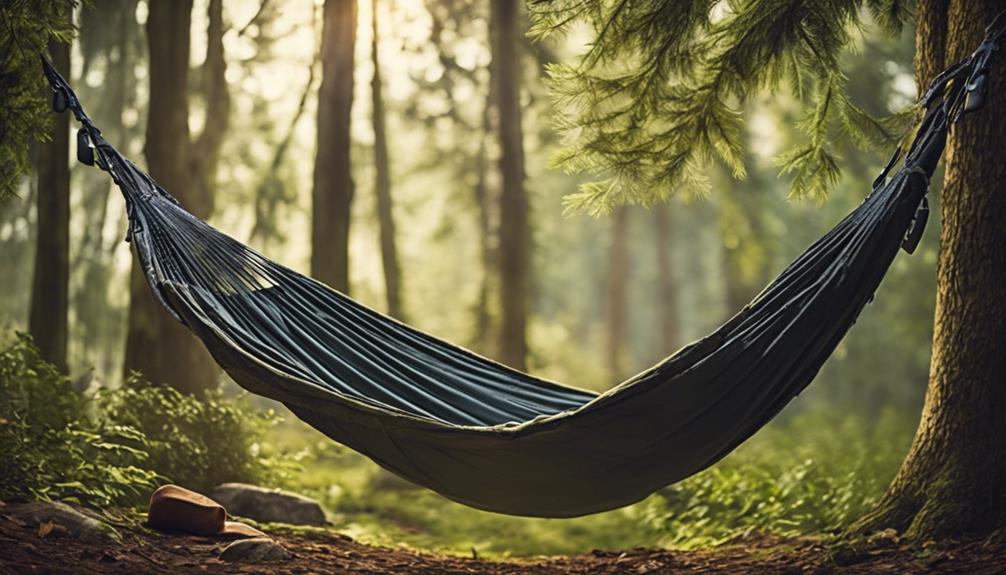
For ensuring a deeply restful night's sleep in your hammock, prioritize the use of proper insulation and adjust the angle and sag for maximum comfort. When setting up your sleeping area, consider the following tips:
- Utilize Insulation: An underquilt is essential for staying warm in chilly conditions. Proper insulation underneath your hammock will prevent heat loss and provide a cozy environment for a good night's sleep.
- Adjust Hammock Angle and Sag: Finding the right angle and sag in your hammock is crucial for a comfortable sleeping position. Experiment with different setups to discover the optimal alignment that supports your body well.
- Incorporate Additional Comfort: Enhance your sleeping experience by using a bug net to keep insects at bay, and consider adding a hammock pillow or headrest for extra comfort. Having essential items within reach will also help you rest undisturbed throughout the night.
Concealing Your Campsite
Hidden within nature's embrace, selecting a campsite shielded by natural features is pivotal for maintaining stealth during your hammock camping excursion. When setting up your hammock, opt for a spot nestled among trees and dense foliage to conceal your campsite effectively. Utilize your hammock's suspension straps to secure it between sturdy trees, ensuring a secure and hidden setup. To enhance your stealth, choose low-profile gear that blends with the surroundings, avoiding bright colors or reflective materials that could give away your location.
Aim to establish your campsite away from well-trodden paths and popular camping areas, seeking seclusion to maintain a discreet presence in the wilderness. Keep noise to a minimum, respecting the tranquility of your surroundings. To truly embody the ethos of stealth camping, leave no trace of your stay, respecting the natural environment and ensuring minimal impact.
Frequently Asked Questions
What Is the Best Setup for a Camping Hammock?
We find the best setup for a camping hammock involves choosing a secure location, finding healthy trees 12-16 feet apart, maintaining a 30-degree angle with proper sag, using wide straps, and suspending at about 6 feet height for stability and comfort.
How Do You Set up a Camping Hammock?
Setting up a camping hammock involves choosing a spot with two sturdy trees, using quality straps to suspend it at a 30-degree angle, and ensuring proper tension for comfort. We hang it about 18 inches off the ground for stability and ease of entry.
Where Do You Put Your Gear When Hammock Camping?
When hammock camping, we store gear in waterproof sacks, attach essentials to our suspension system, and use gear hammocks for larger items. Carabiners on the ridgeline keep small items handy, and gear slings under the hammock store shoes and supplies for easy access.
What Is the Proper Angle for a Hammock?
At around 30 degrees, a hammock finds its sweet spot, cradling us just right for a cozy night under the stars. Proper angles ensure comfort, weight distribution, and tree-friendly hangs, creating a restful camping haven.
What Are the Essential Tips for Setting Up a Stealth Camping Hammock?
When it comes to mastering hammock camping techniques, setting up a stealth camping hammock requires some essential tips. Look for sturdy trees to hang your hammock, and use lightweight but durable straps for secure attachment. Choose a stealthy-colored hammock and practice leaving minimal impact on the environment.
Conclusion
Now that you have mastered the art of stealth camping hammock setup, isn't it exhilarating to think about all the hidden gems waiting to be discovered?
With the right location, tree-friendly straps, proper hanging technique, comfortable sleep setup, and a well-concealed campsite, you're ready to embark on unforgettable outdoor adventures.
So grab your hammock, venture into the wilderness, and let the serenity of nature embrace you.
Happy camping!

